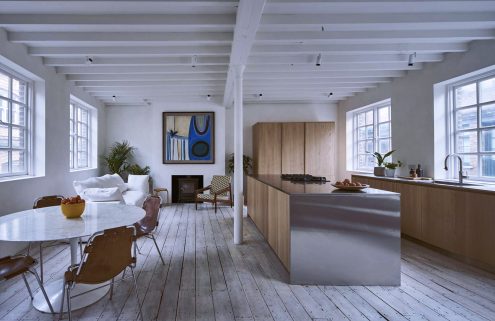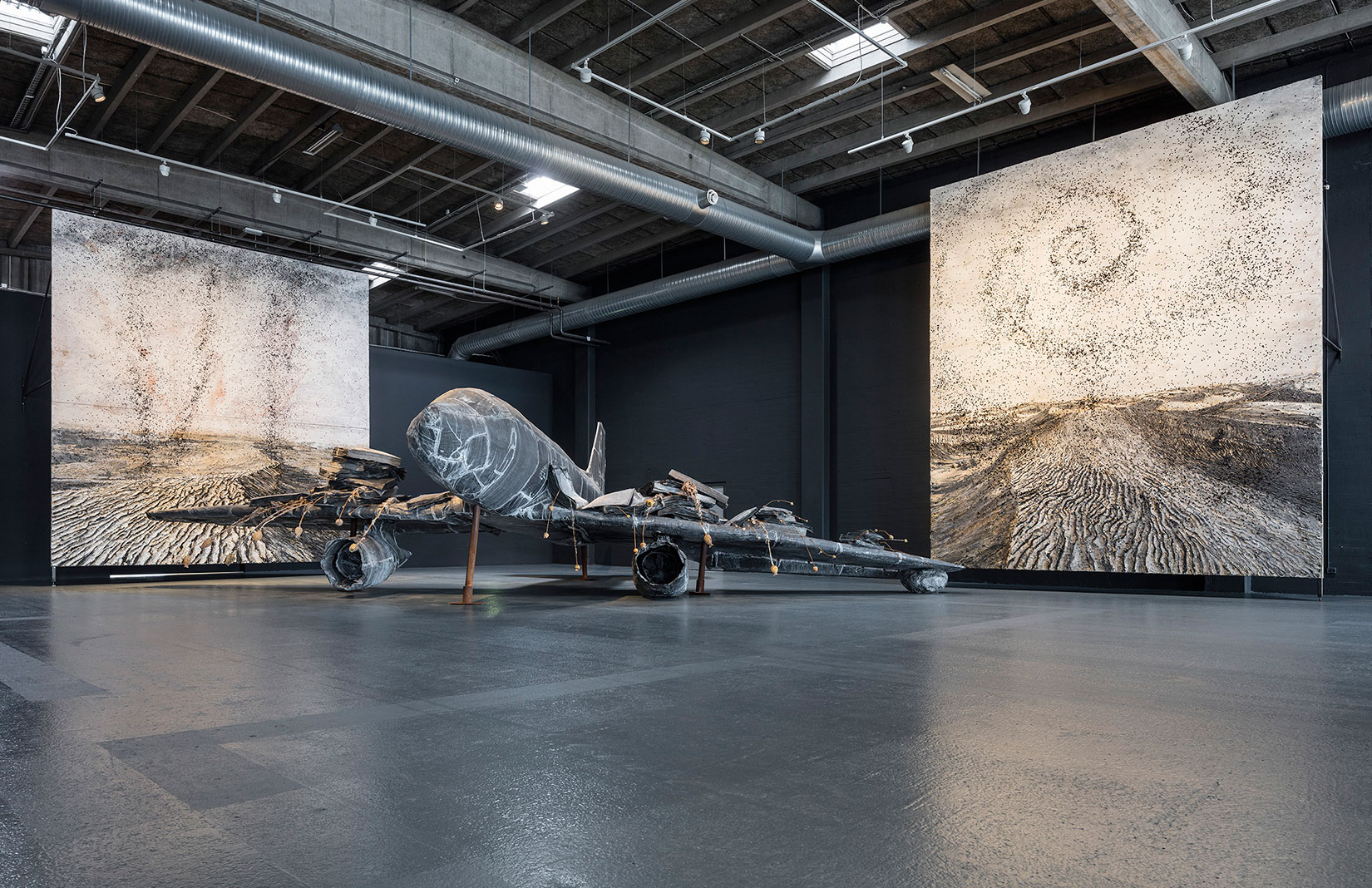Four battered planes fill a vast warehouse in Copenhagen, their cockpits sprouting with poppies and their wings sagging under the weight of piles of books.
You’d be forgiven for thinking you’ve stumbled into an aircraft hangar abandoned after WWII. But this potent vision of dereliction is actually a new show at Copenhagen Contemporary, which has lured art heavyweight Anselm Kiefer to the city, along with a giant cache of his unseen works.
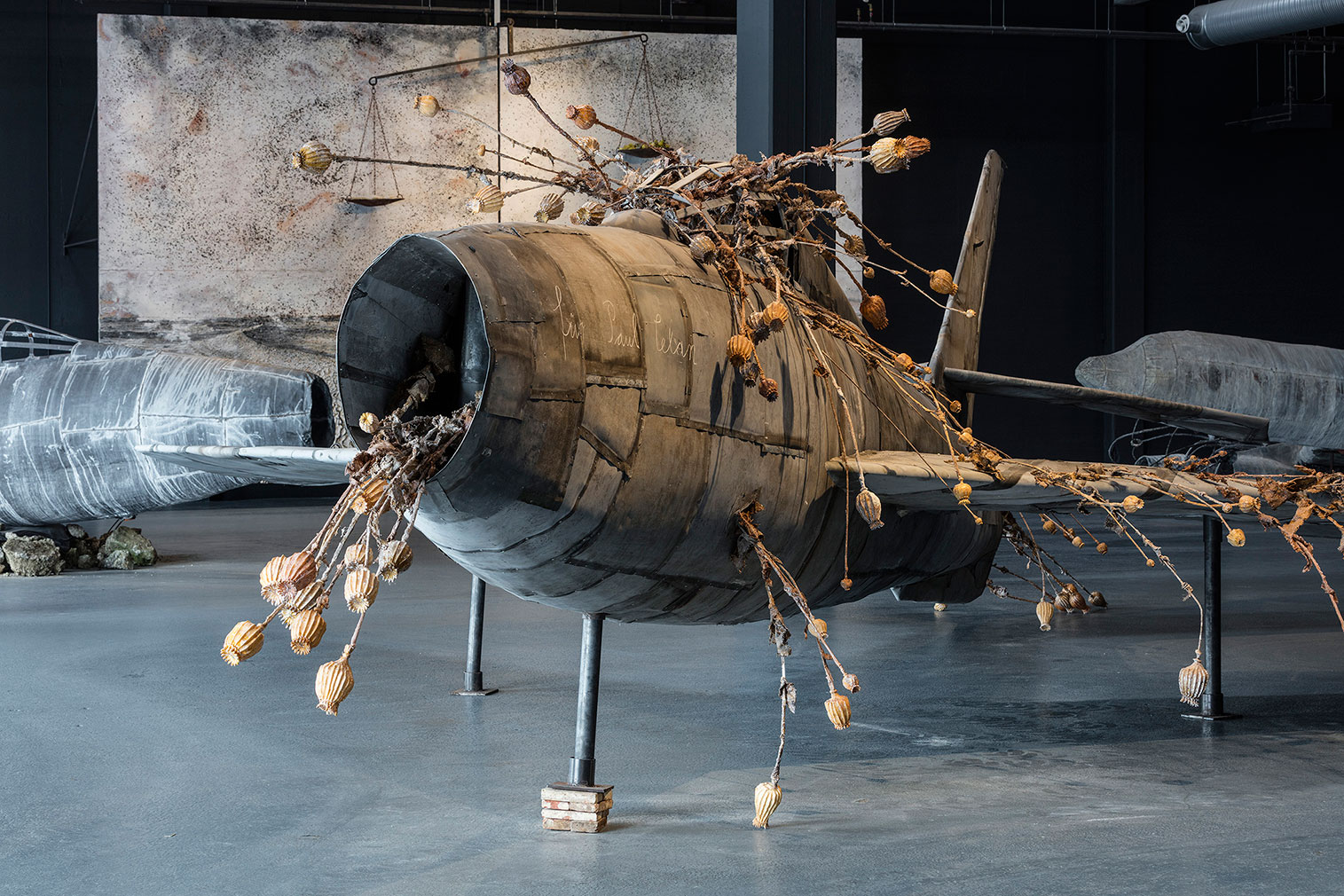
It’s a big coup for the fledgling organisation – albeit a rickety one. But ’big’ is Copenhagen Contemporary’s specialty.
Since opening the doors to its 3,400 sq m space on Papirøen (Paper Island), the art centre has maximised its epic proportions, devoting its halls to large-scale installation art and performative works – the sort most urban European galleries can only dream about. And for the artists, the space is the stuff of dreams too.
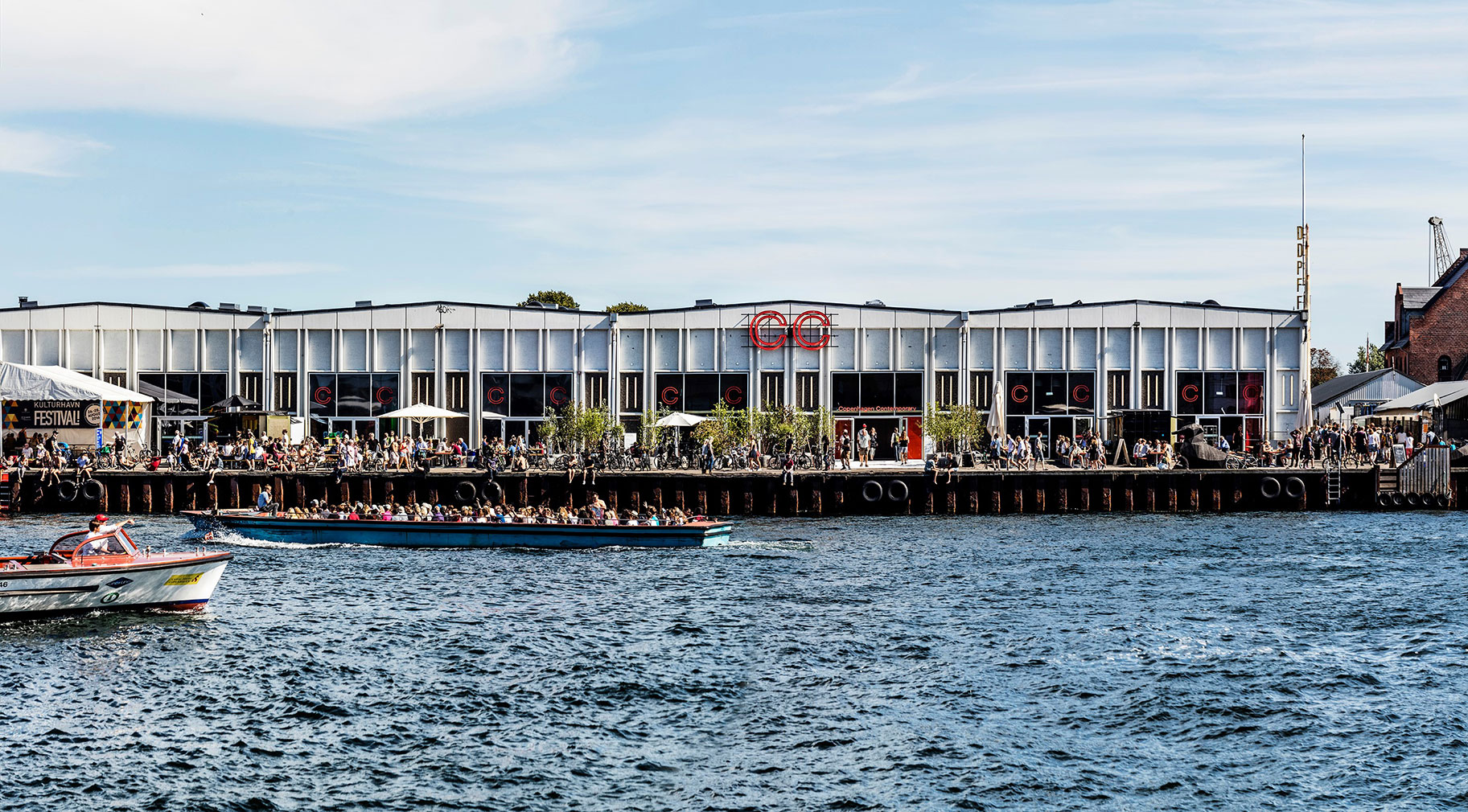
‘When Kiefer saw this place, he fell in love with it immediately,’ says the Gagosian Gallery’s George Armaos, who helped coordinate the show. ‘It’s so like his studio outside Paris. We essentially took part of his studio and brought it here.’
Planes have been part of the artist’s lexicon since the 1980s, but these are the biggest ever to go on show. His war-weary works are 1:1 models of real fighter jets from WWII, the Korean War and the Cold War, but rendered flightless and powerless in soft, pliable lead or zinc.
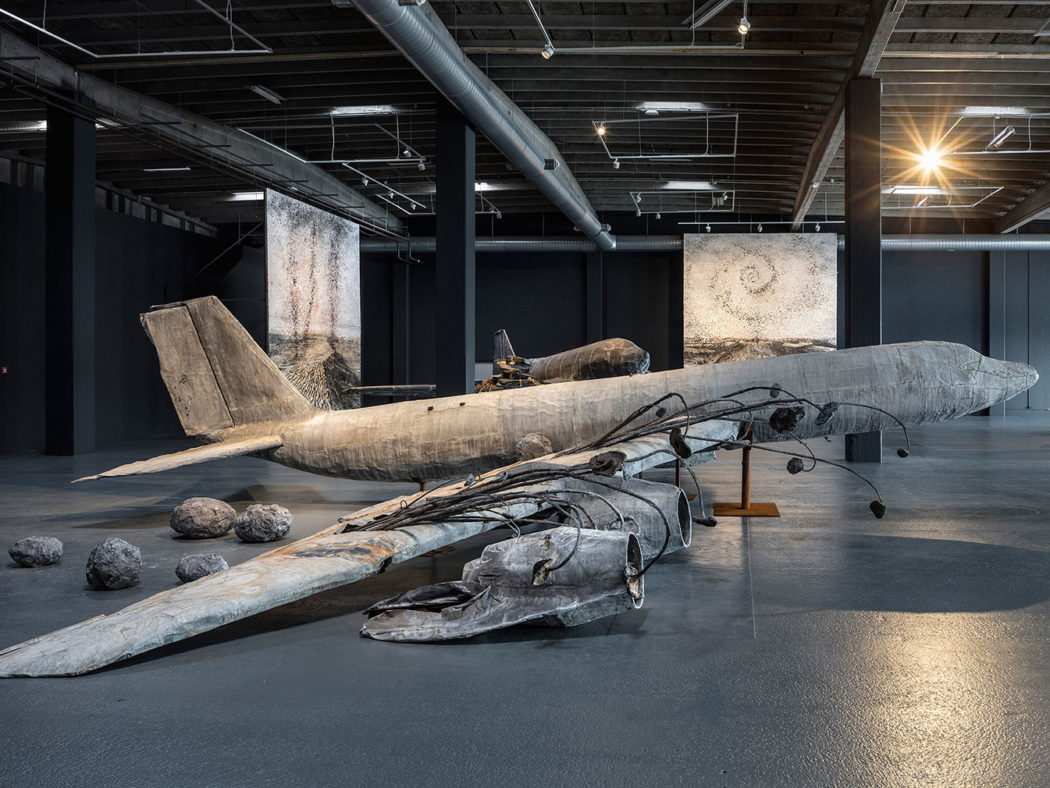
Anselm Kiefer, For Louis-Ferdinand Céline: Voyage au bout de la nuit. Installation shot, Copenhagen Contemporary 2016. Photography: Anders Sune Berg
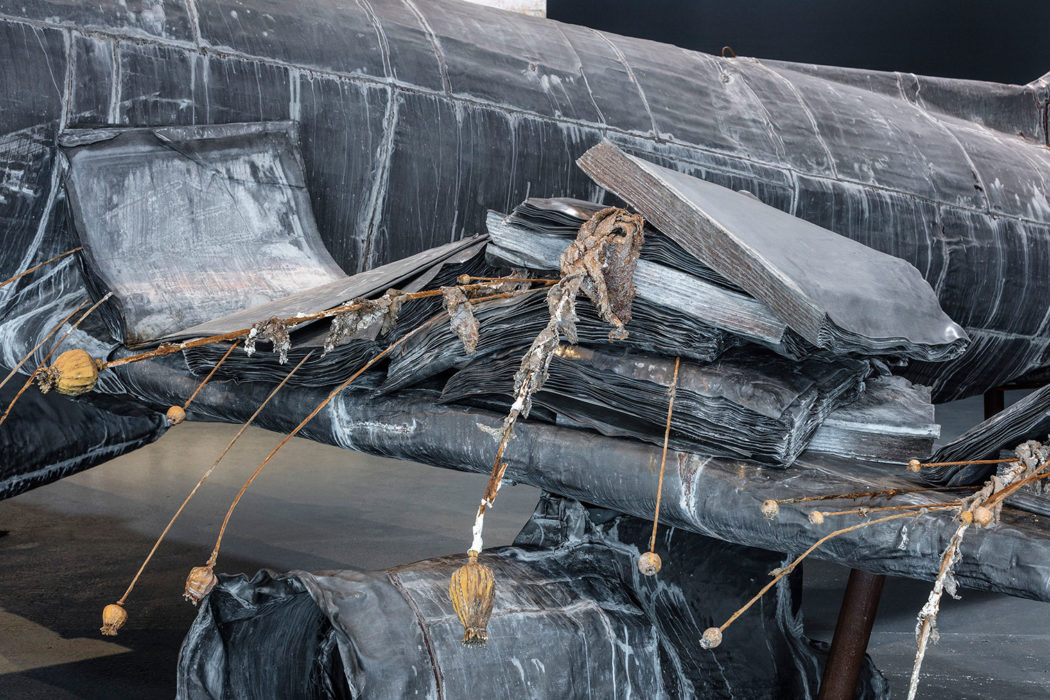
Anselm Kiefer, For Louis-Ferdinand Céline: Voyage au bout de la nuit. Installation shot, Copenhagen Contemporary 2016. Photography: Anders Sune Berg
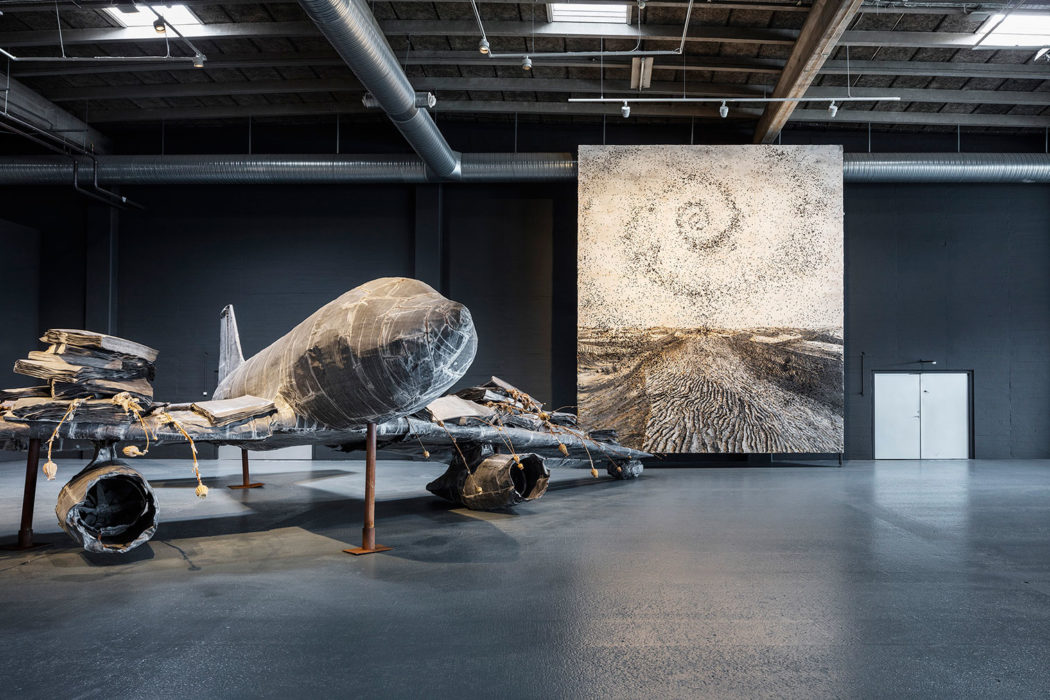
Anselm Kiefer, For Louis-Ferdinand Céline: Voyage au bout de la nuit. Installation shot, Copenhagen Contemporary 2016. Photography: Anders Sune Berg
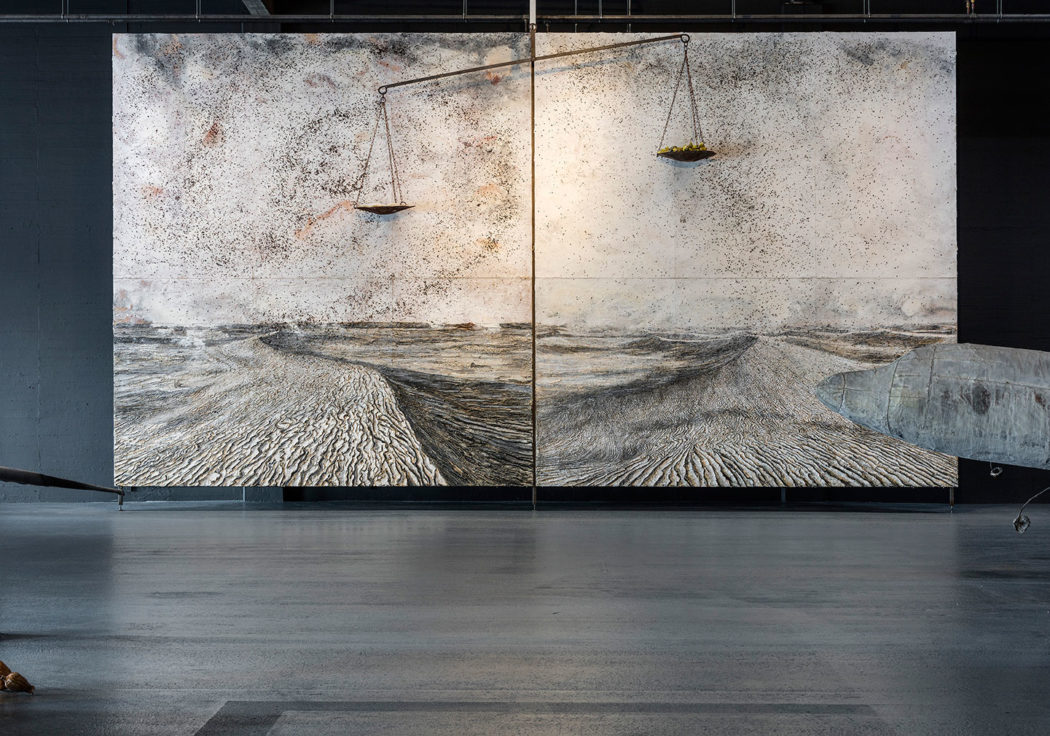
Anselm Kiefer, ‘S Hg NaCl’, 2012 Installation shot, Copenhagen Contemporary 2016. Photography: Anders Sune Berg
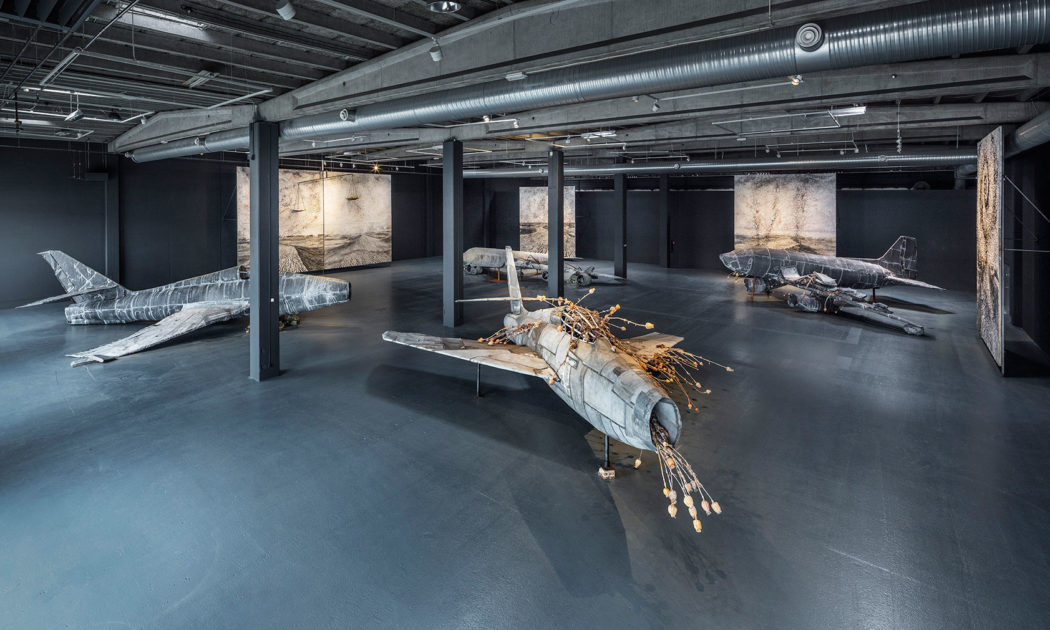
Anselm Kiefer, For Louis-Ferdinand Céline: Voyage au bout de la nuit. Installation shot, Copenhagen Contemporary 2016. Photography: Anders Sune Berg
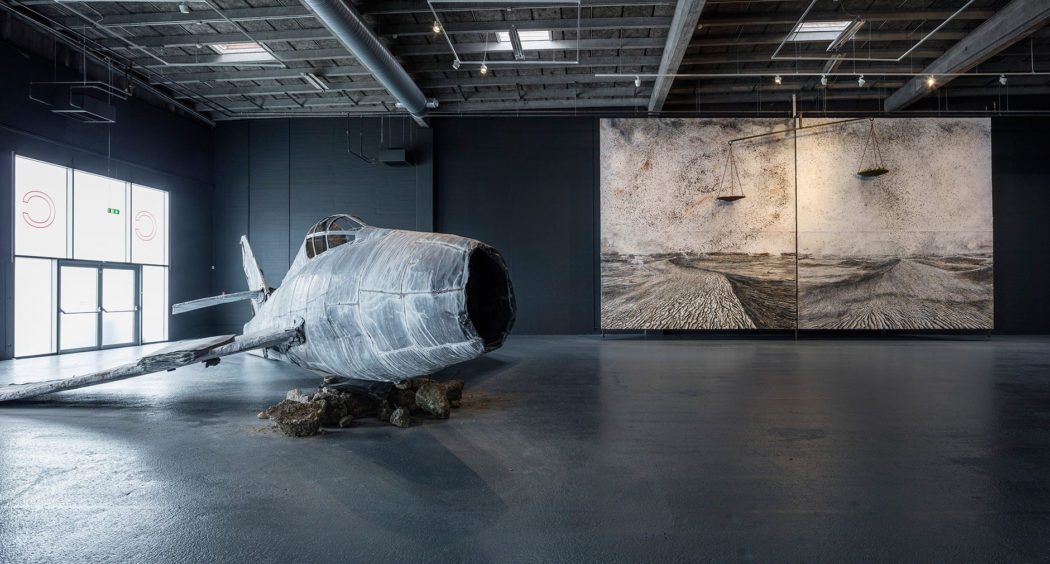
Anselm Kiefer, For Louis-Ferdinand Céline: Voyage au bout de la nuit. Installation shot, Copenhagen Contemporary 2016. Photography: Anders Sune Berg
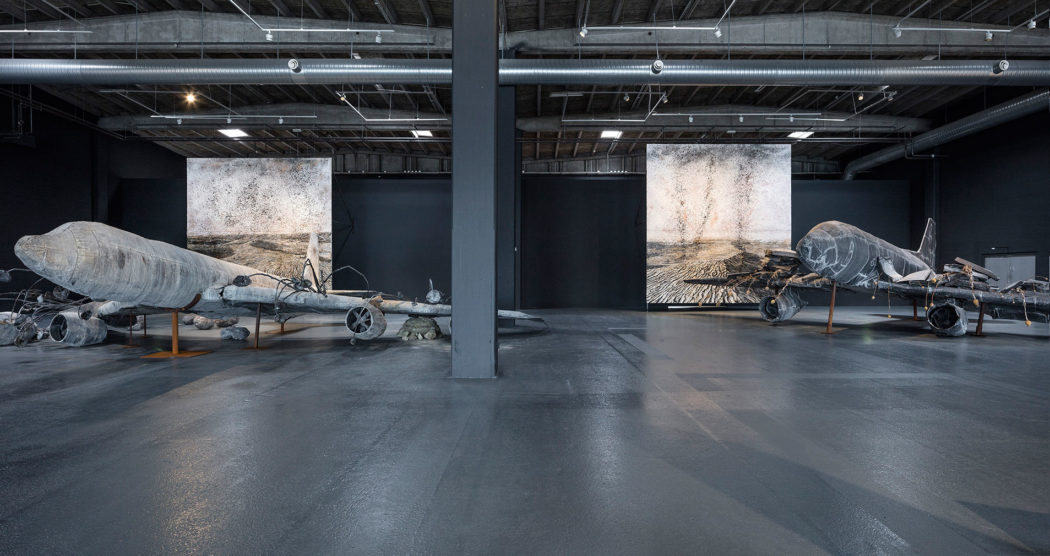
Anselm Kiefer, For Louis-Ferdinand Céline: Voyage au bout de la nuit. Installation shot, Copenhagen Contemporary 2016. Photography: Anders Sune Berg
As with most of the work of Kiefer – born during the final months of WWII in Germany – war traumas and history weigh heavily on this installation, literally in the form of lead books. At Copenhagen Contemporary, the planes are set against unseen paintings of desolate desert landscapes that make the viewer feel miniscule.
Kiefer’s artworks may have been languishing in his studio for a while, but the timing of this show seems apt. ‘He doesn’t see himself as a post-war artist,’ says senior curator, Jannie Haagemann. ‘He’s working in a contemporary context. He’s concerned with the new nationalistic turn the world is taking and history repeating itself.’
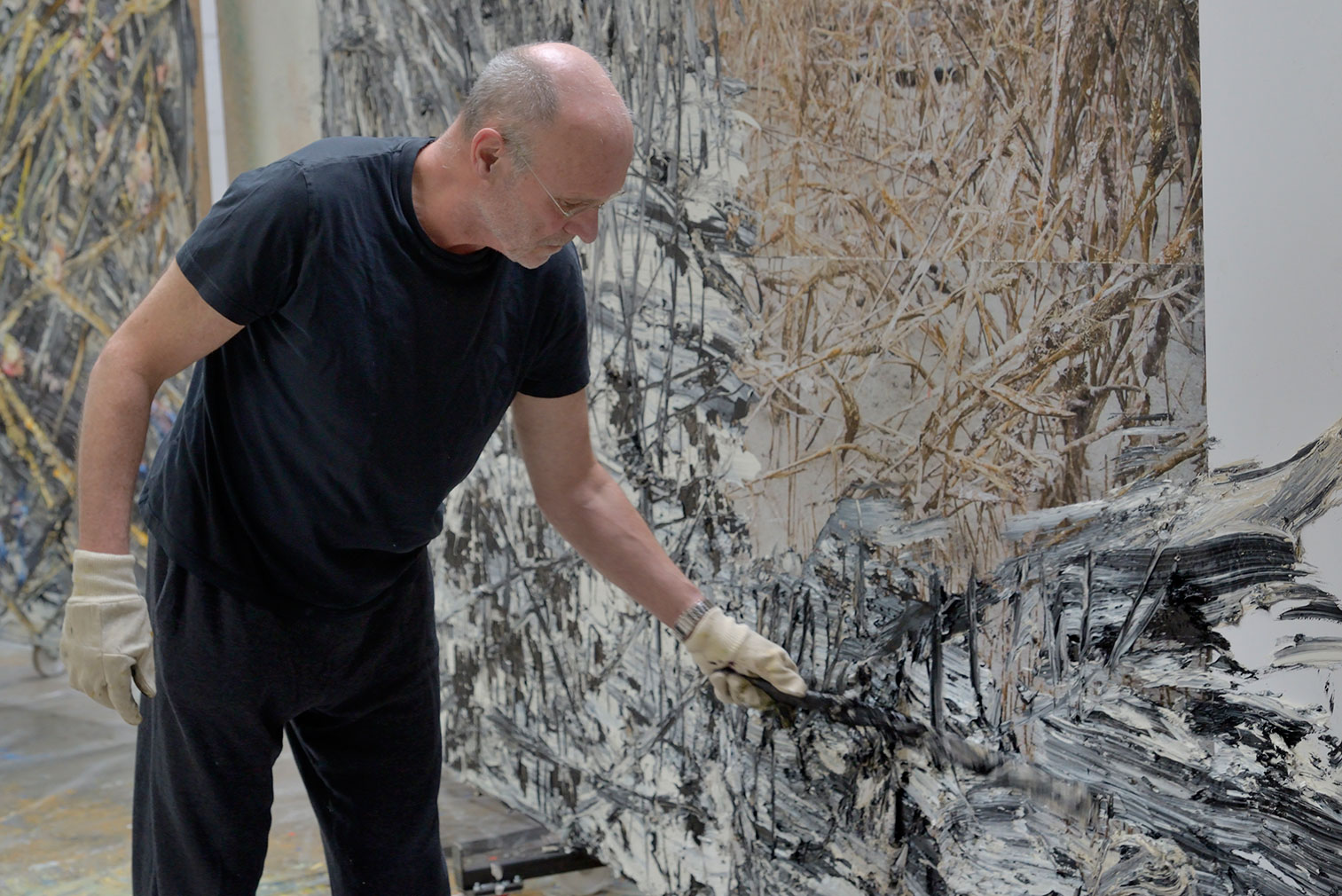
Time is a recurrent theme for Copenhagen Contemporary which is also hosting an installation from Sarah Sze, a 3D collage of ‘moments’ displayed on screens and literally titled ‘Timekeeper’.
It’s a fitting notion for an art centre whose setting is temporary. At the end of 2017, Copenhagen Contemporary’s former paper warehouses will be demolished to make way for new event halls, apartments and a swimming pool on the island – master-planned by Danish architects COBE.
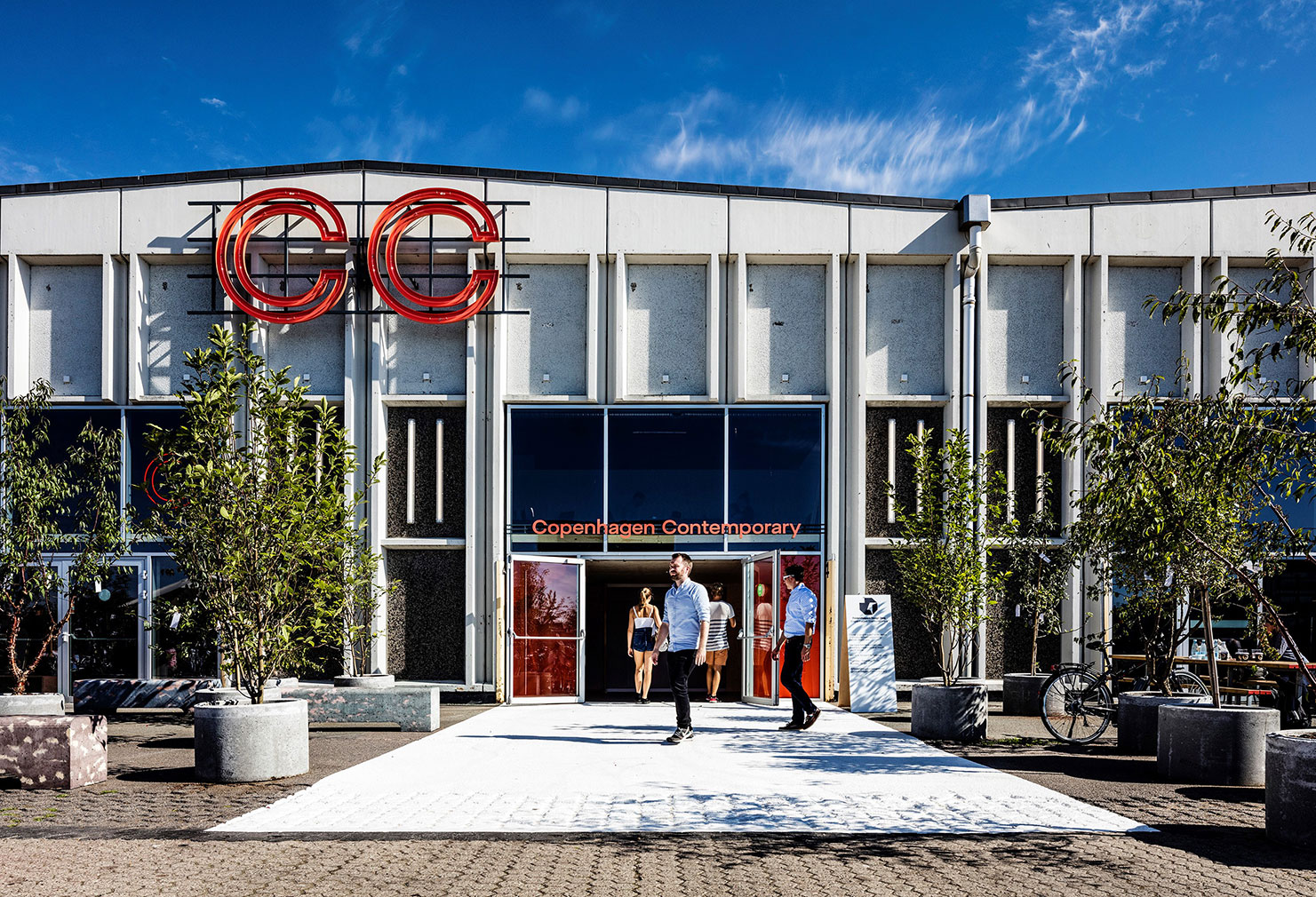
‘We’d love to find another old industrial space,’ says Haagemann, who hints that there’s a strong contender in the mix. ‘Newer buildings are usually carved up by pillars, which make them far less flexible for large-scale installations.’
Going large is a canny strategy for a new arts venture, which can lure in big-hitting artists with works too vast to show in conventional gallery spaces. Since its first exhibition – featuring Carsten Nicolai’s 30m-long ‘Unidisplay’ installation – some 60,000 people have stepped through its doors, 44% of whom are between 20 and 29, an age-group they are particularly targeting.
‘We want to engage a new generation with contemporary art,’ Haagemann adds.
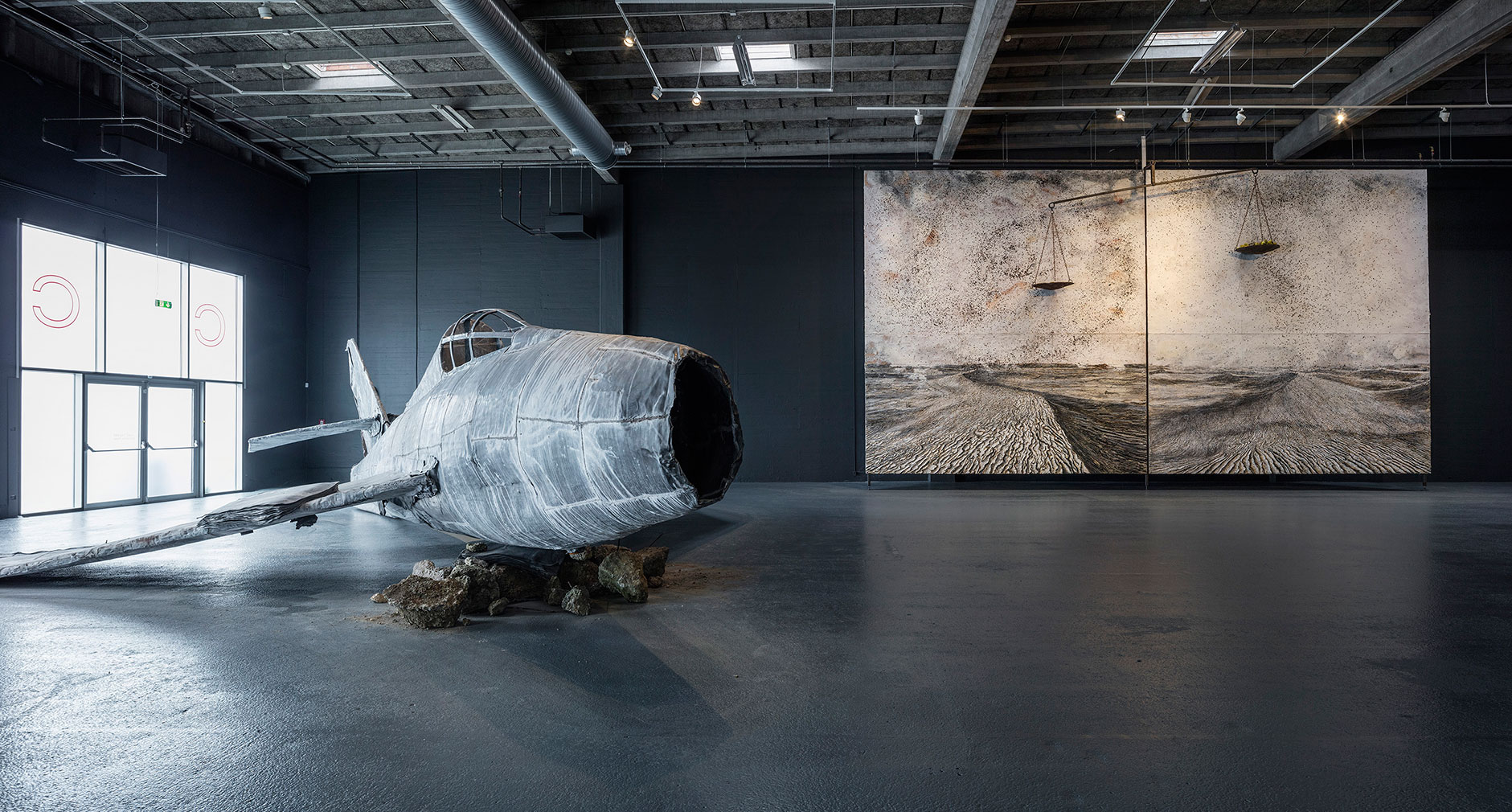
The twenty-somethings will find plenty of instagram opportunities within its monumental installations. And should they need an extra reason to visit, an aptly placed street food market next door provides just the fodder.
Securing another plumb spot in the city centre will be a challenge for Copenhagen Contemporary – but this privately funded institution has a fighting spirit. We’ll be watching closely to find out where it heads next.
Anselm Kiefer’s ‘Louis-Ferdinand Céline: Voyage au bout de la nuit’ runs until 6 August 2017 at Copenhagen Contemporary, Trangravsvej 10-12, 1436 København K, Denmark
Read news: New museums opening in 2017

